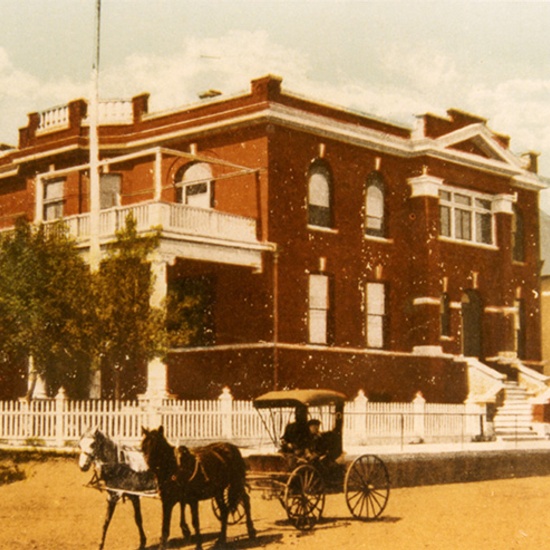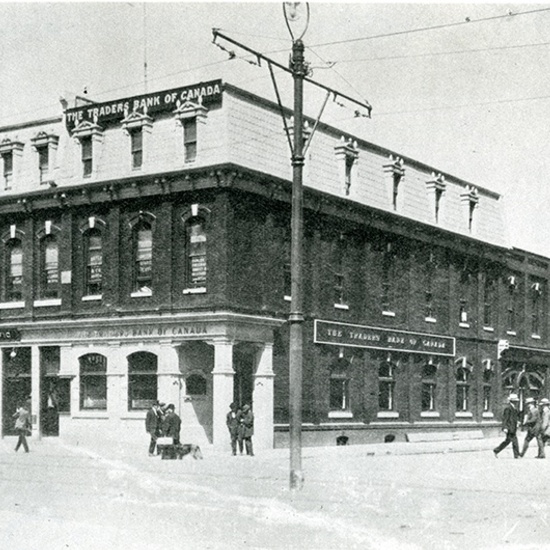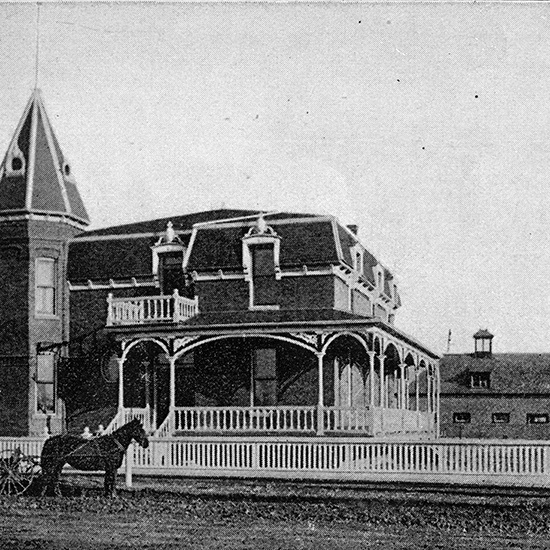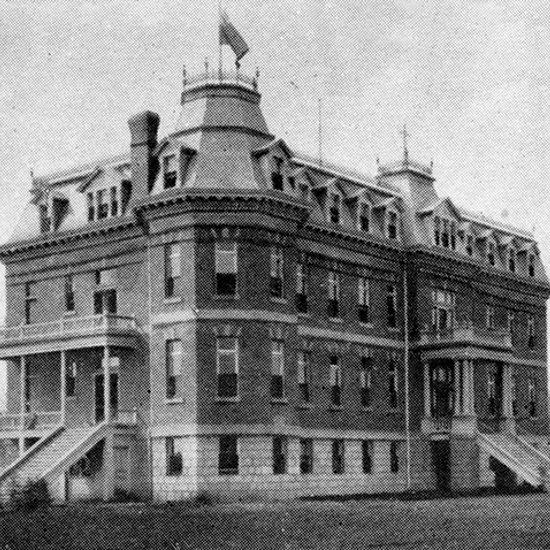Second Empire
Inspired by traditions coming out of the French Renaissance, Second Empire buildings are lavish and complex, and always feature a distinctive Mansard roof.
Inspired by traditions coming out of the French Renaissance, Second Empire buildings are lavish and complex, and always feature a distinctive Mansard roof.
The Second Empire structures in Edmonton were typically constructed by francophone newcomers. Napoleon III led France’s Second Empire in the mid-1800s. He directed the reconstruction of Paris with an architectural style that emanated character and permanence. Second Empire buildings were most common between 1855 and 1885, a time that was also influenced by the romantic Italianate and historical Gothic Revival architecture. In contrast, Second Empire buildings were considered very modern. Because the popularity of the Second Empire style reached its height prior to 1900, few examples remain in Edmonton.
The dual-pitched hipped roofs of the Second Empire style were named for the 17th century French architect François Mansart. These Mansard roofs had a low-pitched upper section and a steep lower slope. Decorative patterns utilizing various colours and textures accented the roof, which were often highlighted with iron cresting above the highest cornice. Second Empire mansard roofs usually have distinctive dormers or dormer windows that could be influenced by various styles. Some Second Empire buildings feature towers that may have a contrasting roofline from that of the main façade. The main walls are generally similar to the rich classical sculptural effects of the Italianate architectural style but Second Empire structures are distinguishable by their reduced eave overhangs.
Characteristics
- distinctive, often dichromatic, mansard roof
- gabled or elliptical dormer windows on the steep lower slope
- molded cornices above and below the steep lower sloped roof
- decorative brackets beneath the eaves
- high windows with elegant moldings
- roofs and balconies generally embellished with iron cresting
Details
Architects
Franz Xavier Deggendorfer
Gordon Wynn
Peter Rule
John Rule
J. A. Senecal
Edward Underwood
Unknown
Time Periods
Character Defining Elements
Balcony, Balusters, Banding, Brackets, Brick structure, Columns, Cornice, Coronets, Cupola, Dentil, Dormer, Exposed rafters, Finial, Gable dormer, Keystone, Mansard roof, Pediment, Pilaster, Pillars, Plinth, Rectangular footprint, Spire, Stone capital, String course, Three storeys or more, Tower, Turret, Two storeys, Volutes, Voussoirs, Wooden shingles



